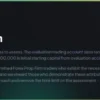In the dynamic realm of financial markets, timing plays a pivotal role in trading success. The quest to find the optimal trading time frame is deeply personal, influenced by individual trading styles, psychological makeup, and market dynamics. This blog post ventures into the intricacies of selecting the most suitable time frame for trading, considering psychological aspects and the strategic advantage of utilizing multiple time frames.
Deciphering the Best Time Frame for Trading: A Psychological Perspective
The psychological aspect of trading cannot be overstated, with each trader’s temperament shaping their approach to time frames:
- Short-Term Trading: Suited for those who revel in rapid decision-making and immediate results, short-term trading (day trading and scalping) appeals to individuals with a high stress tolerance and a penchant for frequent, fast-paced activity.
- Long-Term Trading: Swing traders and investors, who favor a patient, long-view approach, are better aligned with long-term trading. This style caters to those who can navigate the market’s ebbs and flows without succumbing to short-term volatility.
Understanding your personality—whether you lean towards detailed, analytical thinking or adopt a patient, strategic mindset—can guide you towards the time frame that aligns with your natural inclinations.
Embracing the Power of Multiple Time Frames
While individual preference plays a crucial role, the strategy of analyzing multiple time frames concurrently offers a comprehensive market view, enhancing trading decisions:
- Signal Confirmation: Cross-referencing signals across time frames can validate trading decisions, with longer trends supporting short-term trading cues.
- Clarity Over Noise: Longer time frames can help sift through the market “noise” prevalent in shorter charts, providing a clearer overall trend perspective.
- Optimizing Entry and Exit: A blend of time frames allows for pinpointing precise entry points through short-term analysis, while long-term views can inform strategic exit points.
Mastering Multiple Time Frame Analysis
This technique involves a layered approach to market analysis:
- Top-Down Analysis: Starting with broader time frames to grasp the general market sentiment and drilling down to finer charts for entry and exit strategies.
- Aligning Trends: Ensuring coherence across time frames solidifies the basis for trading decisions, offering a unified market view.
- Risk Management: Leveraging longer time frames for broader risk assessment and employing shorter frames for detailed position sizing and stop-loss strategies.
Conclusion
Selecting the appropriate time frame is a personalized journey that balances between one’s trading style, psychological comfort, and the market’s rhythmic fluctuations. By integrating a multi-timeframe approach, traders can navigate the complexities of the market with greater confidence and precision. As you align your strategies with your inherent strengths and market dynamics, you pave the way for informed and successful trading endeavors.























